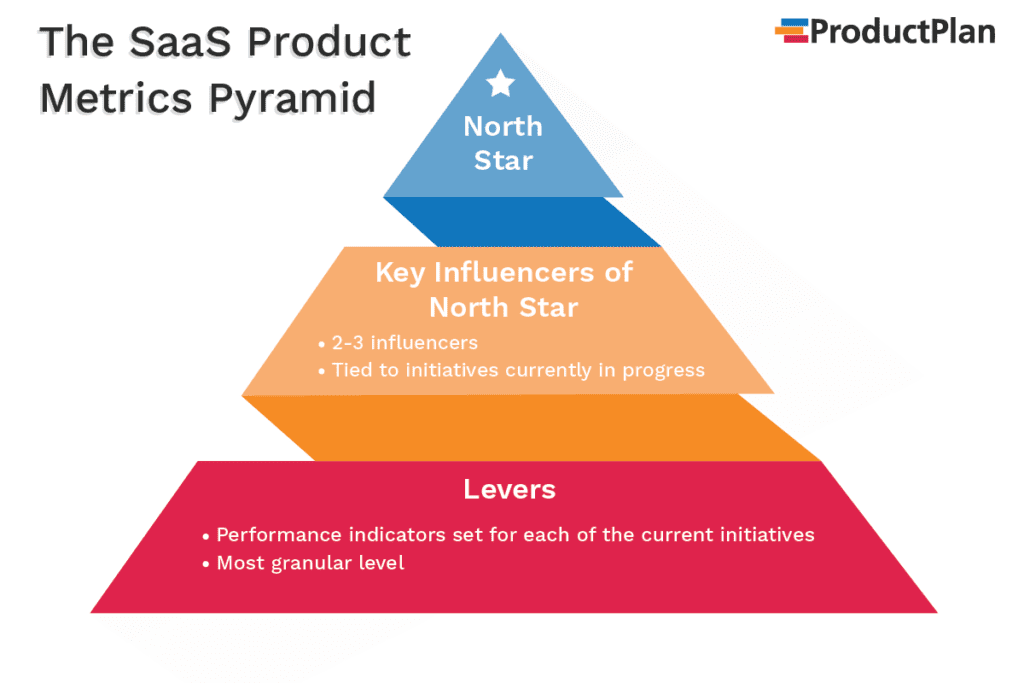What Are Product Metrics?
Product metrics, sometimes called key performance indicators, are quantifiable data points that an organization tracks and analyzes to gauge a product’s success. Examples include conversion rate, churn rate, and monthly recurring revenue. These metrics should all tie back to the product strategy.
Why Are Metrics Important?
Metrics have the potential to deliver incredibly valuable insights and information to organizations and teams. However, for metrics to be meaningful, they must be actionable (i.e., inform business decisions), accessible, and auditable.
“By defining the right metrics early,” writes Jim Semick, founder and chief strategist at ProductPlan, “you can get a better insight to guide your product decisions and your product roadmap. It’s a good practice to begin discussing success metrics as early as you can during the development of the product — and well before it reaches customers.”

Meaningful metrics matter because:
- It’s easier to win over stakeholders: A product metric that directly ties back to business objectives strengthens a product manager’s argument when presenting a product roadmap to stakeholders.
- They lead to better product decisions: The right metric shows more intelligent decision making, carves out a pathway to product improvements and provides clear guidance on prioritization.
- They provide an early warning signal: It’s better to know as soon as possible that some aspect of your product or user experience isn’t working for customers. Monitoring the right metrics enables you to detect these trends early on so you can address them.
- They set the stage for success: Meaningful metrics fuel data-driven decisions, which go hand in hand with successful business outcomes and enable product teams to build better products.
Which Metrics Should You Measure?
The metrics you choose depend on the stage of your product, your industry, the type of product, and the size of your company.
Selecting meaningful metrics will differentiate vanity metrics – statistics that look spectacular on the surface but lack substance and context – and actionable metrics, which are clearly defined measurements that deliver valuable insights directly related to business objectives.
The following questions can help you assess whether or not a metric will be meaningful to your team.
1. Does it reflect actual user behavior?
Examples
- User adoption
- Percentage of users who act based on your promotion (e.g., clicking an ad to learn about the product)
- Customer retention or churn rate
2. Does it connect to business goals?
Examples
- Cost to acquire a new customer
- The lifetime value of the average customer
- The average revenue per customer
3. Does it align with your North Star?
Examples
- Sustained feature adoption
- Sessions per user
- Bounce rate
- Number of active users
When choosing metrics, aim for quality over quantity by focusing on your product and company’s right data and nothing more. When you only measure what you truly need, you avoid getting lost in irrelevant data, which tends to throw teams off track.
Learn steps for taking action with product metrics.
Related terms: A/B Test, Churn, Lifetime Value, Customer Acquisition Cost, Usability Testing, Product Ops, Key Performance Indicator.